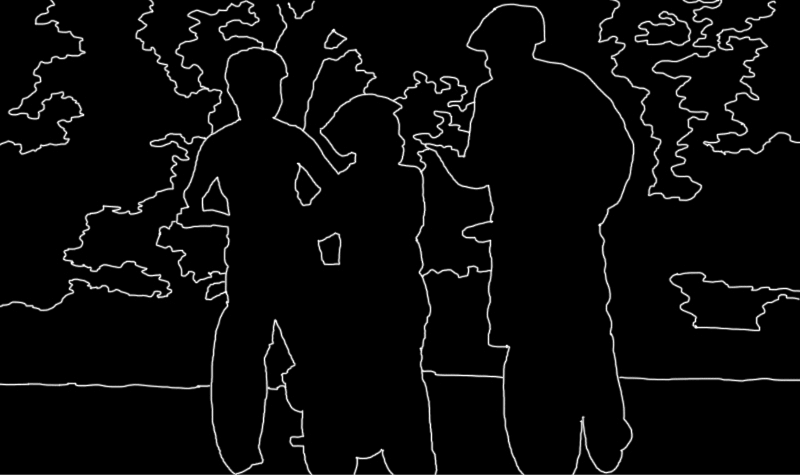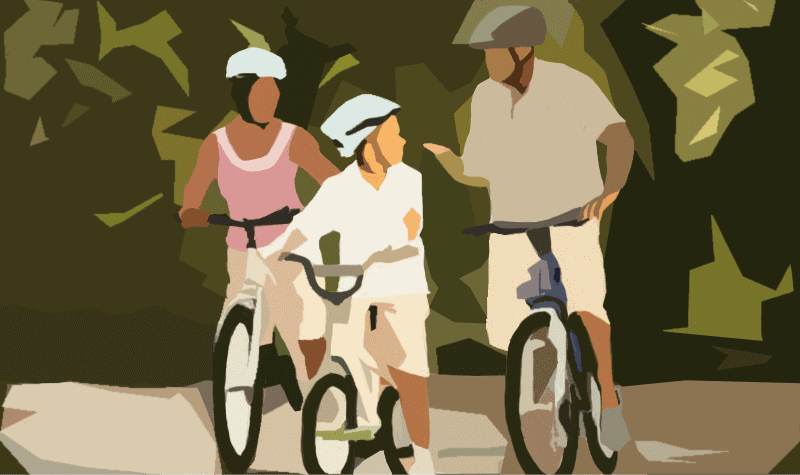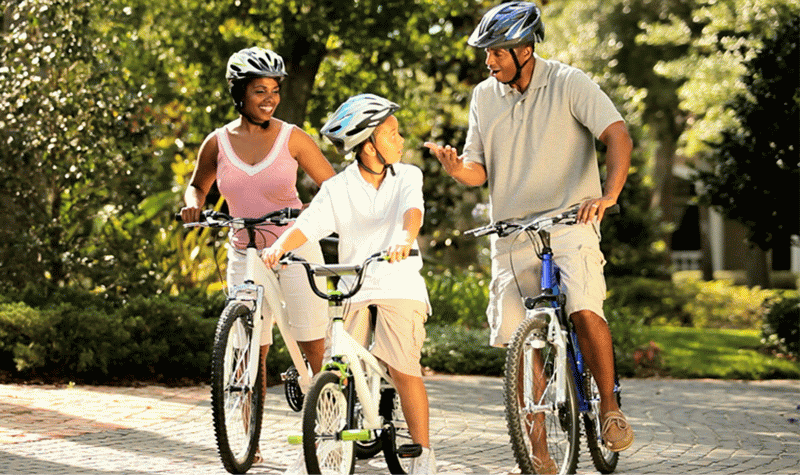Vision is a complex process. The eyes register information, with each eye passing the information to the opposite side of the brain. The brain then sorts basic information like light and dark, and then it explores characteristics like color, shape, size, location and movement, finally putting it all together in a single image. In the Follow Your Visual Pathway activity, we explore how the information passed in by the eyes, is put together by the brain. There is a graphic representation of a human head seen from above. It uses two separate lines to represent information coming into each eye. The lines then cross to the opposite side of the brain at the back of the head. Finally, the lines curve towards the center and join to form one line that travels up through the center of the head as the information is processed. There are five buttons arranged vertically next to the head, which represent the steps in the path that the brain follows to process the information. These are as follows. One Edges. Two Shapes. Three Color. Four Objects and Faces. Five Motion. At the top of the screen, there is a rectangular space where the image being processed by the brain is shown. The image is built in layers, in the order of the five steps. Tab through these buttons to hear a description of the image at each step in the process.



 Motion is the fifth step in the visual pathway. Now the same scene is shown as a moving video. It is clear to determine that the adults and child are a family, talking, laughing and riding their bikes down the tree-lined pathway together.
Motion is the fifth step in the visual pathway. Now the same scene is shown as a moving video. It is clear to determine that the adults and child are a family, talking, laughing and riding their bikes down the tree-lined pathway together.
1. Edges
Your brain first turns the whole scene into very small edges.
Can you tell what the picture is?
2. Shapes
Next, your brain puts these edges together in slightly bigger shapes.
Can you tell how many objects there are?
3. Color
As your brain zooms out, it recognizes color patterns.
Can you start to put the scene together?
4. Objects & Faces
Further along, your brain puts shapes together to recognize objects and faces.
Now, you know what you are looking at.
5. Motion
Finally, your brain processes where things are in the world.
Your brain has now rebuilt the information that your eyes saw.
Want to discover how your brain puts images together?
Follow your visual pathway step-by-step to see the full picture.
Seeing Is Not Simple
Vision requires your brain to carry out many simultaneous steps. Information registered by your right eye gets processed in the left half of the brain, while your right brain handles data from the left eye. The primary visual cortex first sorts basics like light and dark. From there, the brain investigates two paths. One explores “what:” characteristics like colors, shapes, and size. The other path covers “where:” locations and movements. The brain then somehow knits together all the data to create an image—but we’re not sure how this synthesis occurs. As you followed your visual pathway in this activity, you could see how these characteristics came together to form a full moving scene.
Want to discover how your brain puts images together?
Click the steps in ascending order to view your visual pathway.
Click the steps in descending order to go back in reverse through the pathway.
Want to discover how your brain puts images together?
Tap the steps in ascending order to view your visual pathway.
Tap the steps in descending order to go back in reverse through the pathway.